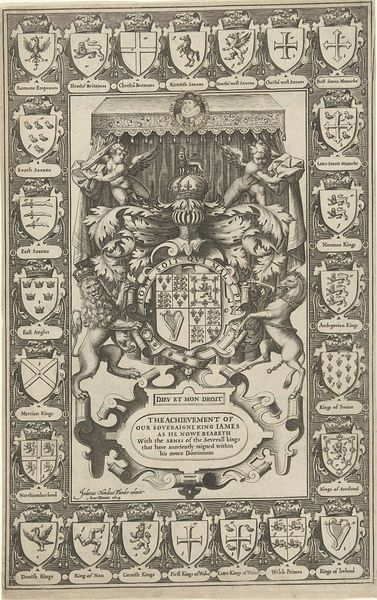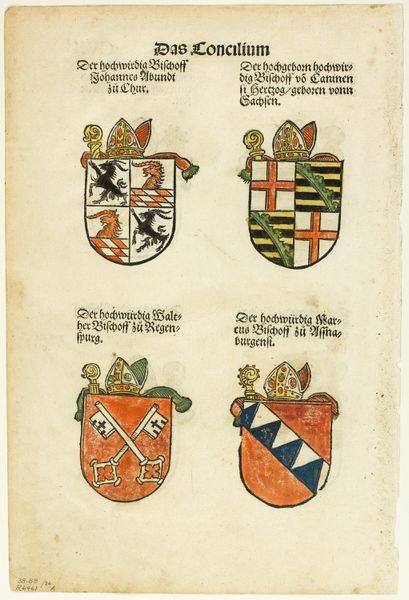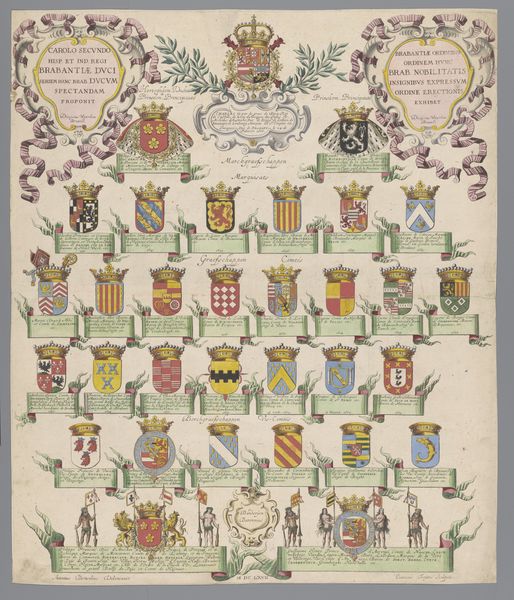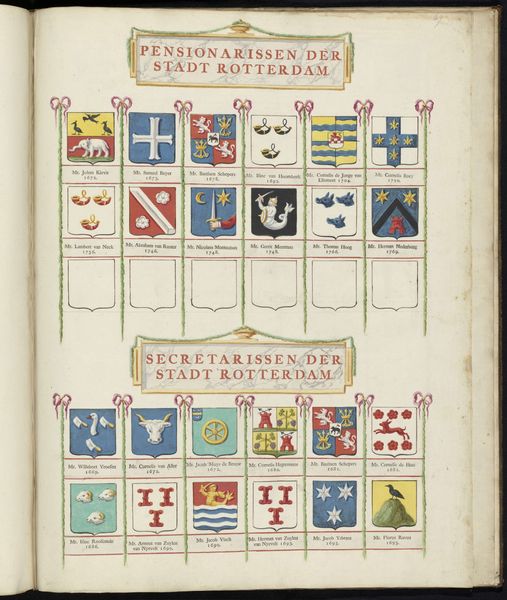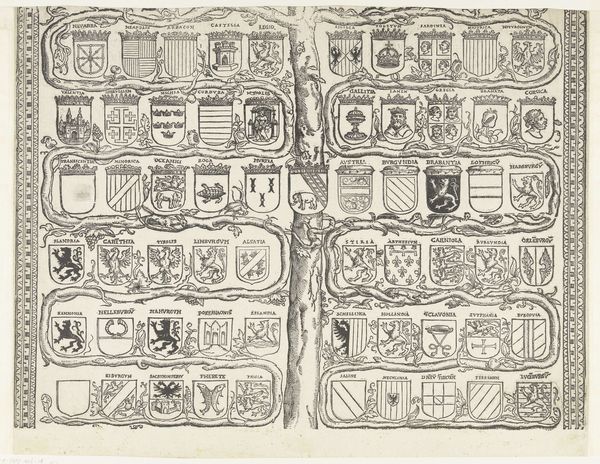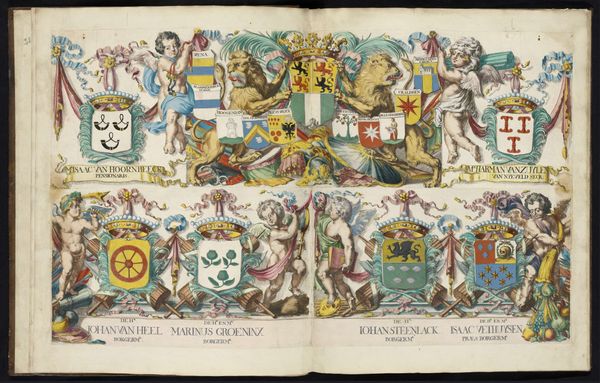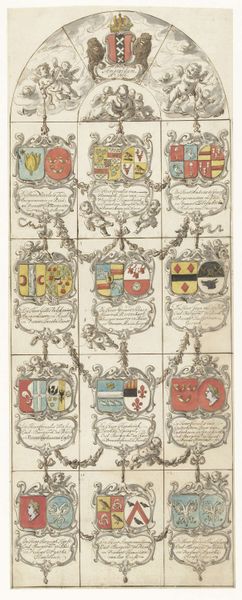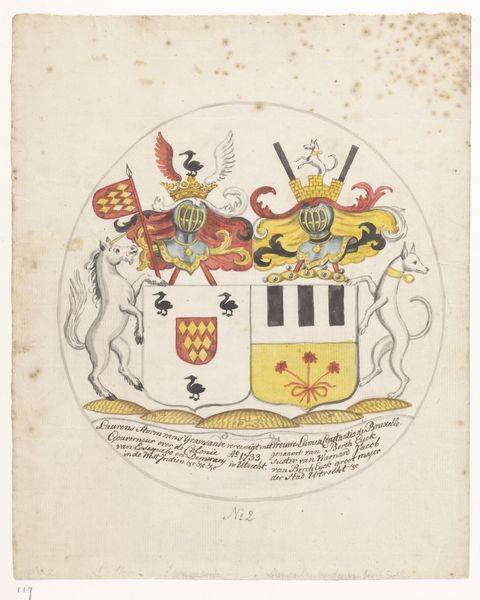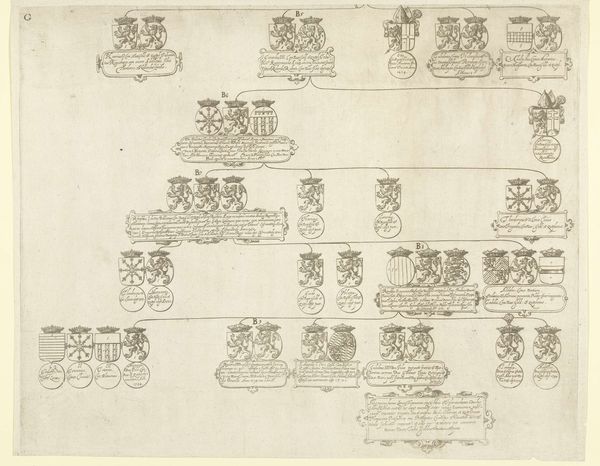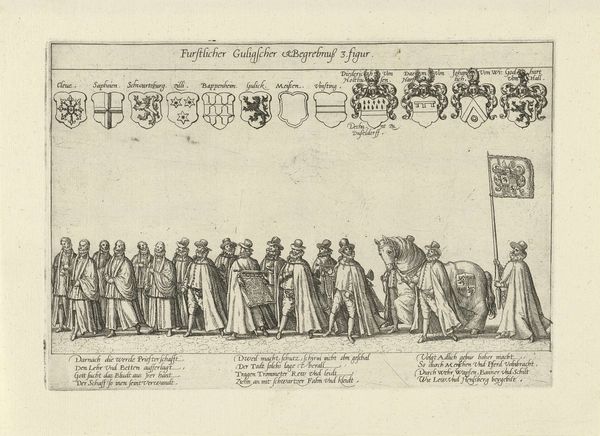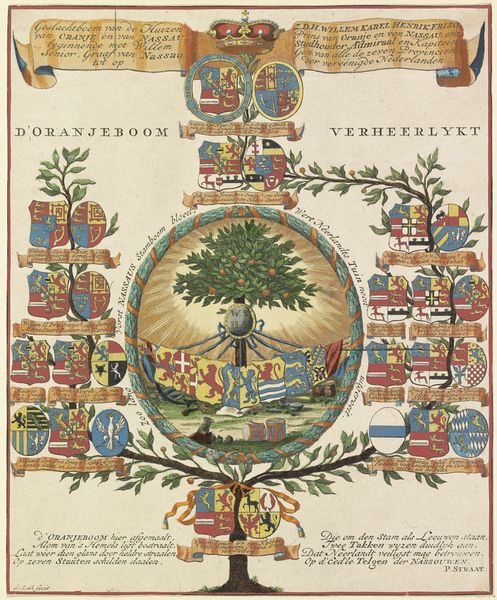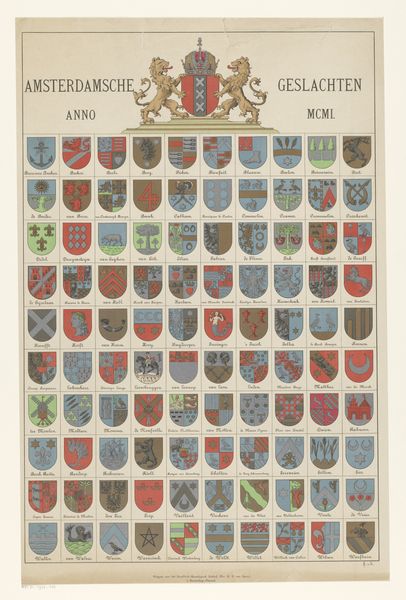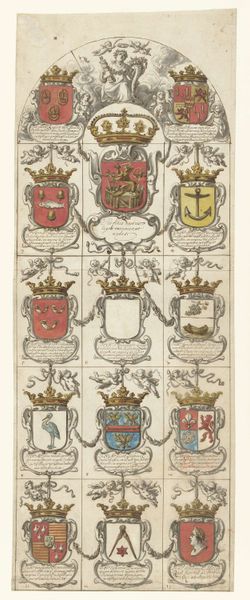
Kwartierstaat met de wapens van de zestien kwartieren van Jan van de Poll 1700 - 1749
0:00
0:00
drawing, coloured-pencil, paper, ink
#
portrait
#
drawing
#
coloured-pencil
#
medieval
#
paper
#
ink
#
coloured pencil
#
miniature
Dimensions: height 57 cm, width 70 cm, depth 3.8 cm
Copyright: Rijks Museum: Open Domain
Curator: Let's talk about this fascinating piece titled "Kwartierstaat met de wapens van de zestien kwartieren van Jan van de Poll," created sometime between 1700 and 1749. It's a drawing done with ink and coloured pencil on paper. Editor: My initial impression is that it resembles a meticulously crafted map or an architectural blueprint. It’s amazing to consider the detail achieved through manual means. The creator really prioritized a visual inventory. Curator: Absolutely. It is essentially a family tree, a display of Jan van de Poll's sixteen quarterings, demonstrating his noble ancestry. It's fascinating how these family trees become powerful visual representations of status, identity, and even power dynamics during that time. What it meant to claim a noble past, particularly in light of political or social ambitions. Editor: Indeed. Look at the materials. Ink and coloured pencil on paper. A conscious choice was made to highlight the craftsmanship, the labor behind tracing these lineages, emphasizing permanence and historical value while making something materially valuable in itself. Curator: Consider too that those coats of arms aren't merely decorative. They carry layers of inherited significance – symbols of status, ancestral deeds, and often, marital alliances that shaped familial trajectory and power. They speak to societal values and a deeply stratified social order. The medieval, the styles of heraldry presented in a unique way here. Editor: Precisely. I find it so compelling to consider how heraldry—usually metal worked or stitched—transitions to a rendering on paper with ink and colored pencils. How did it redefine the medium of social identity for this artwork and its context? Curator: And beyond Jan van de Poll himself, we can explore questions around commissioned artwork—who created it? For whom? What was its purpose? To legitimize, perhaps to visually concretize a lineage for future generations? These questions open avenues for understanding 18th century aristocratic ideals. Editor: Agreed. Thinking about the consumption and viewing of this type of artwork. The labor is important. But where and how was the piece used? And by what kind of hand? Was it viewed as an everyday utility item? Or put away and seen seldomly by many but the patron and family. Curator: These questions of process are vital in gaining context from Jan van de Poll's genealogical presentation and the means by which these objects informed perceptions of both family and society. Editor: It encourages us to see history, and art history, as interwoven with identity, labor and process, leading to a fuller understanding.
Comments
No comments
Be the first to comment and join the conversation on the ultimate creative platform.
